
Voloshky Ukrainian Dance Ensemble
Carnival (new Mark Morris), Rebirth: Kozachok, Kupala, Spring Games
Pennsylvania, Bryn Mawr, McPherson Auditorium
12 September 2012
www.voloshky.com
When it was announced that Mark Morris would choreograph a new piece for Philadelphia’s Voloshky Ukrainian Dance Ensemble, the collaboration sounded promising. Morris, after all, knows Slavic folk dance: As an 11-year-old in Seattle, he danced alongside the Russian Balalaika Orchestra and in his teenage years learned Balkan dances as a member of the local Koleda Folk Ensemble.
Given this history and the fact that such groups rarely have opportunities to work with choreographers of this stature, it’s unfortunate that Morris’s newest dance Carnival, which had its premiere on September 14 at Bryn Mawr College, is so difficult to enjoy. The piece could be both grating and boring, and it did little to show off the charming and energetic Voloshky dancers, who fared better elsewhere in the more traditional pieces. (Dancers representing the Zorainy Ukrainian Song and Dance Ensemble – visiting from Kirkovohad, Ukraine – also appeared in this performance, but the program didn’t make clear who performed in each number.)
The work is set to Camille Saint-Saëns’ famous suite The Carnival of the Animals, but the music has been re-orchestrated by Andrii Shoost to give it a more Slavic flavor and allow it to be played by the small ensemble of live musicians from the Zorainy Ensemble. This decision struck an odd note, the piece not really benefiting from the popular score (almost unrecognizable in places) nor quite fitting the folk orchestration. Maile Okamura’s costumes – Hawaiian shirts and black tights for the men, sunny yellow dresses for the women – suggest modern or contemporary dance.
The choreography is more puzzling still. The many sections of the work are disjointed, and although a few steps recur – a scooping motion made with one arm, for instance – no larger ideas are developed. Dancers hold hands to form a chain and veer around the stage like a snake; five women attach and detach from a man strolling in circles with his eyes closed; men pair off to hold women by the arms and quickly escort them across the stage. Some of these images are intriguing, but Morris discards them quickly. Any sense of community – a quality that draws me to both folk dancing and Morris’s choreography – is muted. In one passage, a woman stops her weeping and begins skipping around the stage when the others leave her alone. So much for shared humanity.
Male athleticism is one element of Ukrainian folk dance that Morris does make use of. A man crosses the stage in a series of backflips, and another follows upside-down, jumping with his arms. Then a third man passes by in a series of comically exaggerated frog leaps. It’s one of several moments – like the human snake – that made me wonder whether Morris was attempting to explore the score’s animal themes. If that was his intent, it wasn’t always entirely clear.
Fortunately, the program also featured a first act, titled “Rebirth”, which featured short traditional music and dance numbers themed around the seasons. (The lineup was modeled after a program choreographed by Anatolij Kryvochyzha of the Yatran Ukrainian Dance Company, for a 1977 U.S. tour that was canceled abruptly by Soviet authorities before it had finished.) In “Kozachok,” a dance representing springtime, two men rattle off high kicks to compete for a woman’s affection, and the rest of the ensemble joins in the mating ritual in “Kupala,” a summer dance inspired by pagan ritual.
Most remarkable in this act were the contrasts. It began with a welcoming dance: The couples entered the stage formally, in lines, and both men and women stood with utmost poise and moved their arms softly. By the first act-finale – “Spring Games,” a celebration of the snow thawing – the audience barely had time to applaud each physical feat and false climax. Couples melted into group formations and vice versa at dizzying speed, and three men attempted to outdo each other with Cossack-style bravura. The slow build and sheer physicality of the piece were thrilling; an older gentleman sitting next to me actually started howling. Shamelessly crowd-pleasing? Maybe, but their enthusiasm was irresistible.








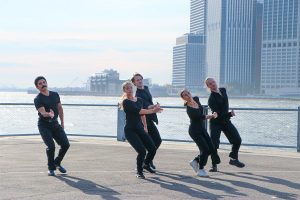



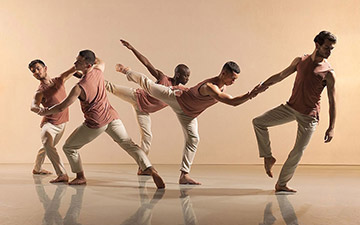
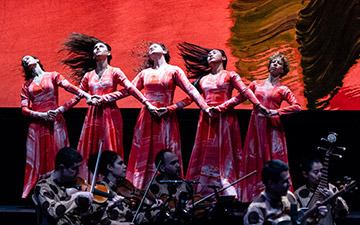

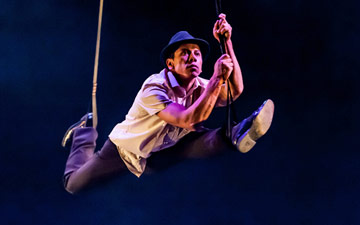
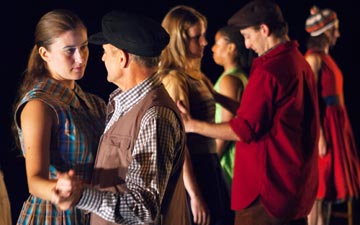
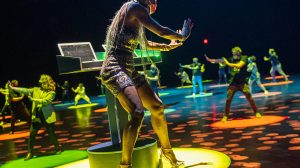
You must be logged in to post a comment.